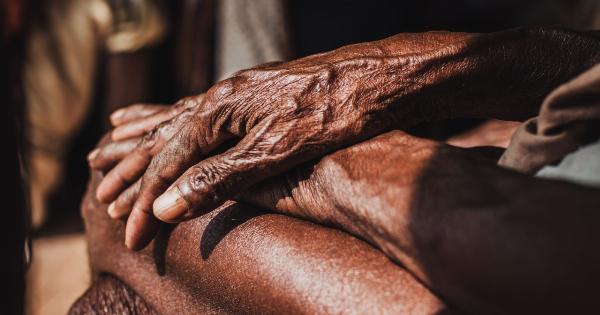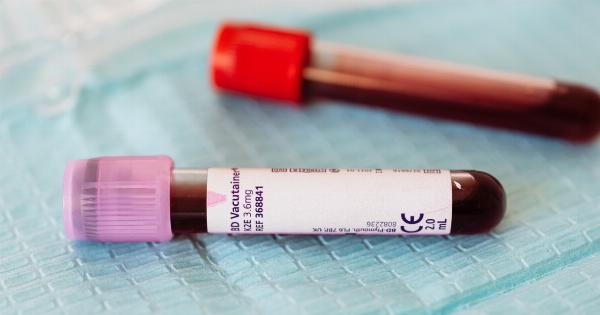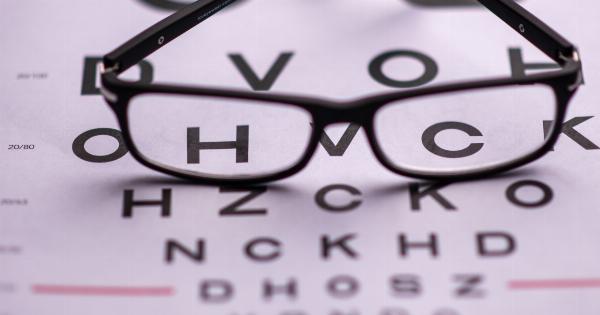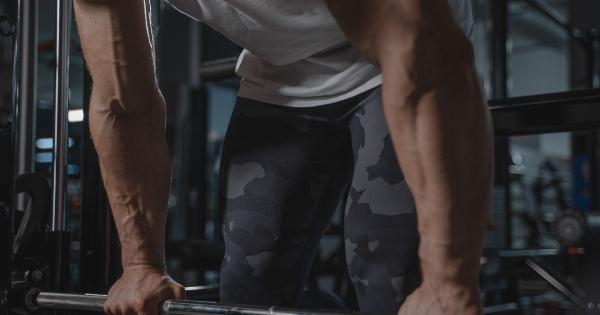Venous insufficiency is a condition in which the veins have difficulty circulating blood from the legs back to the heart.
It can occur due to various reasons, including damage to the valves in the veins that prevent blood from flowing backward, blood clots, or weakness in the vein walls. Venous insufficiency is a common problem, affecting millions of people worldwide.
Causes of Venous Insufficiency
There are several factors that can lead to venous insufficiency, including:.
1. Varicose veins
Varicose veins occur when the valves in the veins become weak or damaged, causing blood to pool in the veins. This can lead to swelling, pain, and skin changes, such as discoloration or ulcers.
2. Deep vein thrombosis (DVT)
DVT is a blood clot that forms in one of the deep veins in the body, usually in the legs. This can cause swelling, pain, and tenderness in the affected leg.
In some cases, the clot can break off and travel to the lungs, causing a pulmonary embolism, which can be life-threatening.
3. Obesity
Obesity can put pressure on the veins in the legs, making it harder for blood to flow back to the heart. This can lead to venous insufficiency, as well as other problems, such as varicose veins and leg swelling.
4. Pregnancy
Pregnancy can increase the risk of venous insufficiency, as the growing fetus puts pressure on the veins in the pelvis and legs.
Hormonal changes during pregnancy can also cause the vein walls to relax, making it harder for blood to flow back to the heart.
5. Aging
As we get older, the valves in our veins can become weaker and less effective, leading to venous insufficiency.
Other age-related changes, such as decreased mobility and the development of other health problems, can also contribute to the development of venous insufficiency.
Symptoms of Venous Insufficiency
The symptoms of venous insufficiency can vary depending on the severity of the condition. Some common symptoms include:.
1. Swelling in the legs and ankles
Swelling in the legs and ankles is a common symptom of venous insufficiency. This can occur due to the buildup of fluid in the tissues as a result of poor circulation.
2. Pain and discomfort
Many people with venous insufficiency experience pain and discomfort in their legs, especially after prolonged periods of standing or sitting.
This can be due to the increased pressure on the veins, as well as the inflammation that can occur as a result of poor circulation.
3. Skin changes
People with venous insufficiency may experience skin changes, such as discoloration, dryness, and itching. They may also develop ulcers or sores on their legs that do not heal easily.
4. Fatigue and heaviness
Many people with venous insufficiency feel tired and heavy in their legs, especially after extended periods of activity. This can be due to the increased effort required to circulate blood through the veins.
Diagnosis of Venous Insufficiency
The diagnosis of venous insufficiency typically involves a physical exam, medical history, and imaging tests.
During a physical exam, the doctor will look for signs of swelling, discoloration, and other skin changes that may be indicative of venous insufficiency. The doctor may also check for varicose veins or perform a Doppler ultrasound to evaluate blood flow in the veins.
Treatment Options for Venous Insufficiency
The treatment for venous insufficiency depends on the underlying cause and the severity of the condition. Some common treatment options include:.
1. Compression stockings
Compression stockings apply pressure to the legs, helping to improve circulation. They can help to relieve swelling, fatigue, and pain associated with venous insufficiency.
2. Lifestyle changes
Lifestyle changes, such as losing weight, exercising regularly, and avoiding prolonged periods of standing or sitting, can help to improve venous insufficiency symptoms.
3. Medications
Medications, such as blood thinners or medications that improve blood flow, may be prescribed to treat venous insufficiency.
4. Procedures
In some cases, procedures may be necessary to treat venous insufficiency. Some common procedures include:.
A. Sclerotherapy
Sclerotherapy involves injecting a chemical into the affected veins to cause them to close and be reabsorbed by the body. This can help to improve blood flow and relieve symptoms.
B. Vein ablation
Vein ablation involves using heat or laser energy to seal off the affected veins, helping to improve blood flow and relieve symptoms.
C. Venous bypass surgery
In rare cases, venous bypass surgery may be necessary to treat venous insufficiency. This involves bypassing the affected vein with a healthy vein from another part of the body.
Conclusion
Venous insufficiency is a common problem that can cause a range of uncomfortable symptoms.
If you are experiencing swelling, pain, or skin changes in your legs, it is important to speak with your doctor to determine whether you have venous insufficiency and to identify appropriate treatment options. With proper care and management, you can improve your symptoms and prevent complications associated with venous insufficiency.





























